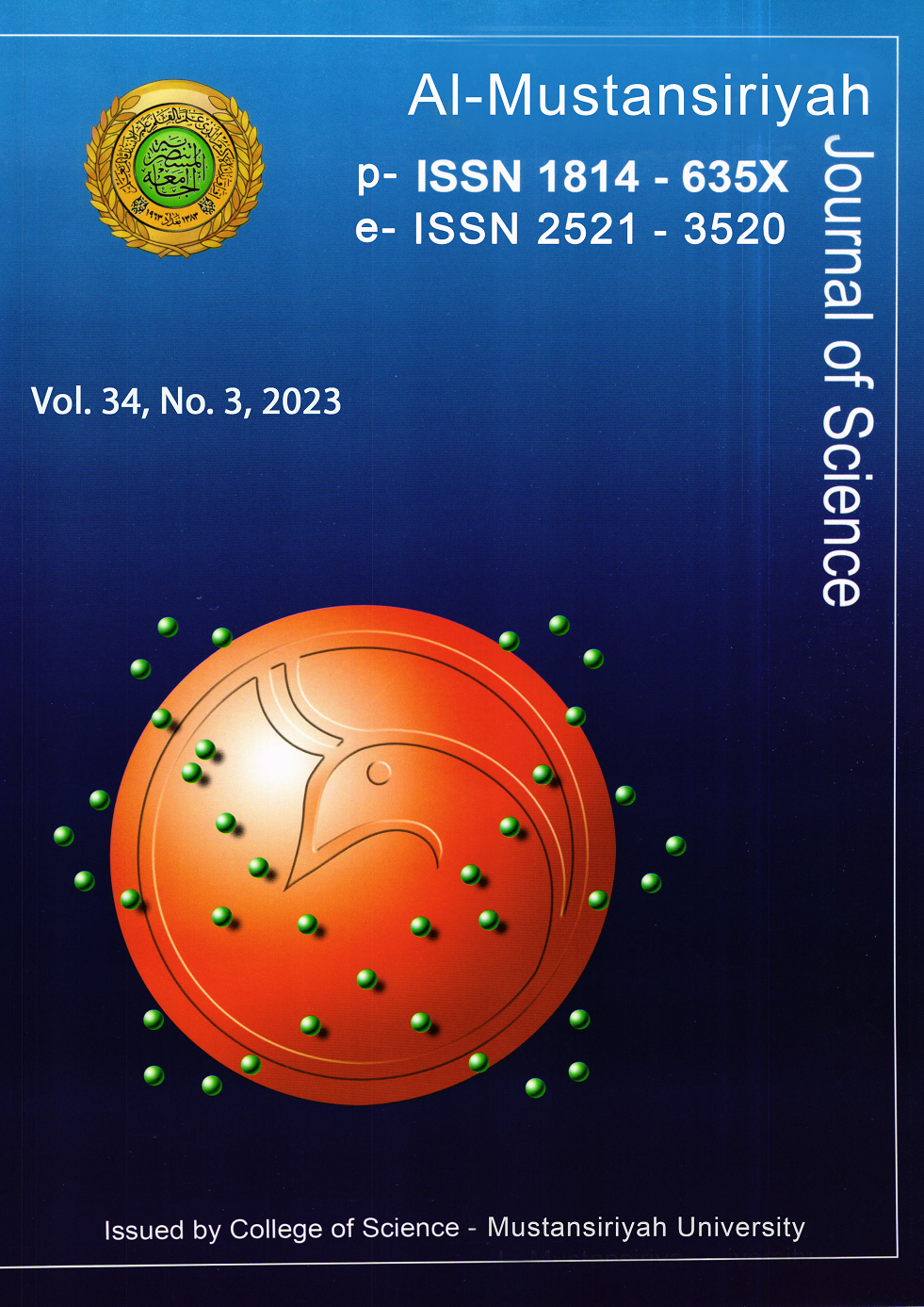Evaluation of the effect of Ag- doping ZnO microstructure on optical and structural properties and application in photocatalytic properties
DOI:
https://doi.org/10.23851/mjs.v34i3.1291Keywords:
ZnO, microparticles, silver doping, absorbance, photoluminescence, photocatalyticAbstract
The chemical bath deposition technique was successful in producing silver-doped ZnO thin films. On the glass substrates, pure and silver-doped ZnO thin films have been deposited. By using a variety of sophisticated techniques, including X-ray Diffraction (XRD), Field emission Scanning Electron Microscope (FESEM), UV-vis spectrophotometer, and photoluminescence (PL) spectroscopy, the generated pure and Ag-doped ZnO thin films were studied. According to X-ray analysis, Ag-doped ZnO crystallized as a hexagonal wurtzite structure with a preference for growth in the (002) planes, the pure and Ag-doped ZnO's hexagonal wurtzite structures provided evidence for the microparticles' luminescent characteristics. The analysis of the methylene blue degradation revealed that the best photocatalytic response was displayed by the doped ZnO thin film. All thin films' optical bandgaps were broad, and they generally decrease after more doping, it was possible to determine that the particles were elliptical and rod-shaped and that their diameters were on the order of micrometers. for both the doped and pure ZnO microparticles were seen to exist. The outcome shows that the produced microparticles' average grain diameter was determined to be (15,20.5,14.5) um, with noteworthy band gaps of 3.39,3.34 eV, and 3.08 eV, respectively.
Received: 28/01/2023
Revised: 28/02/2023
Accepted: 08/03/2023
Downloads
References
Andrzejewski, J., Pietrzyk, M. A., Jarosz, D ,& Kozanecki, A,Materials, 2021,14(23),7222..
service, R.F. Science, 1997, 276, 895.
Obreja, P., Cristea, D., Dinescu, A., & Romaniţan, C., Applied Surface Science, 2019,463, 1117-1123
Mohammed, K. A., Al-Kabbi, A. S., & Zidan, K. M , AIP Conference Proceedings, 2019,Vol. 2144, 1, 030009)
Tsay, C. Y., & Yu, S. H. , Coatings, 2021,11(10), 1259.
O. Lupan, L. Chow, L.K. Ono, B.R. Cuenya, G. Chai, H. Khallaf, S. Park, A. Schulte, Synthesis and characterization of Ag-or Sb-doped ZnO nanorods by a facile hydrothermal route, J. Phys. Chem. C ,2010,114 ,29, 12401-12408.
Y. Yan, M. Al-Jassim, S.-H. Wei, Doping of ZnO by group-ib elements, Appl. Phys. Lett. 2006,89 ,18, 181912.
J.M. Coronado, F. Fresno, M.D. Hernández-Alonso, R. Portela, Design of advance photocatalytic materials for energy and environmental applications, Springer, New York, 2013
C. Karunakaran, V. Rajeswari, P. Gomathisankar, Optical, electrical, photocatalytic, and bactericidal properties of microwave synthesized nanocrystalline Ag-ZnO and ZnO, Solid State Sci. 2011,13 ,5 , 923-928.
P. Amornpitoksuk, S. Suwanboon, S. Sangkanu, A. Sukhoom, N. Muensit, J. Powd. Technol. 2012,219 , 158-164.
Thangaraju Chitradevi, A Jestin Lenus and N Victor Jaya, Mater. Res. Express 7 , 2020, 015011
HARUN GÜNEY, Eastern Anatolian Journal of Science, 2015, Volume I, Issue II, 77-81.
S.M. Hosseini, I. Abdolhosseini Sarsari, P. Kameli, H. Salamati, Journal of Alloys and Compounds 640, 2015, 408-415
B. Sathya, V. Porkalai, D. Benny Anburaj, G. Nedunchezhian, S J. Adv. Sci. Eng.2017, 3 ,4 ,411-421.
Thangaraju Chitradevi, A Jestin Lenus and N Victor Jaya, Mater. Res. Express 7, 2020 , 015011.
V. Porkalai1, B. Sathya1, D. Benny Anburaj1, G. Nedunchezhian1, S. Joshua Gnanamuthu2, R Meenambika3, Modern Electronic Materials ,2018,4,4, 135-141.
Muhammad Ali Bhatti, Aqeel Ahmed Shah, Khalida Faryal Almani, Aneela Tahira, Seyed Ebrahim Chalangar, Ali Dad Chandio, Omer Nur, Magnus Willander and Zafar Hussain Ibupoto, Ceramics International,2019,45,17 , 23289-23297.
Downloads
Key Dates
Published
Issue
Section
License
Copyright (c) 2023 Al-Mustansiriyah Journal of Science

This work is licensed under a Creative Commons Attribution-NonCommercial 4.0 International License.
(Starting May 5, 2024) Authors retain copyright and grant the journal right of first publication with the work simultaneously licensed under a Creative Commons Attribution (CC-BY) 4.0 License that allows others to share the work with an acknowledgement of the work’s authorship and initial publication in this journal.






















